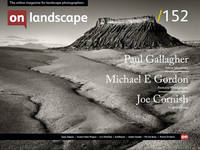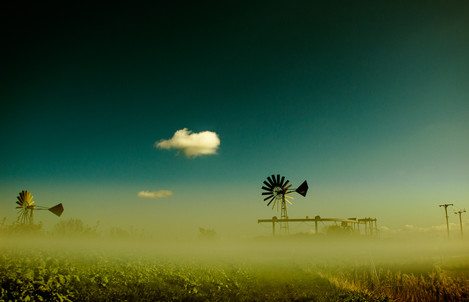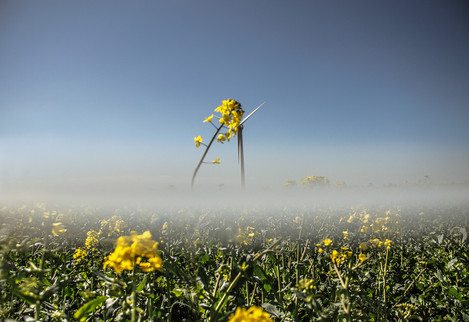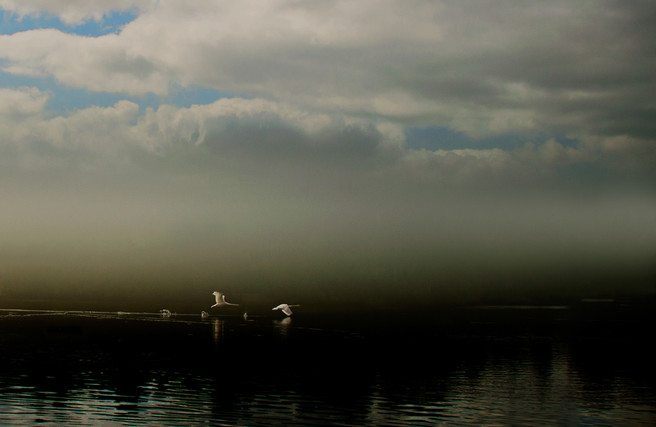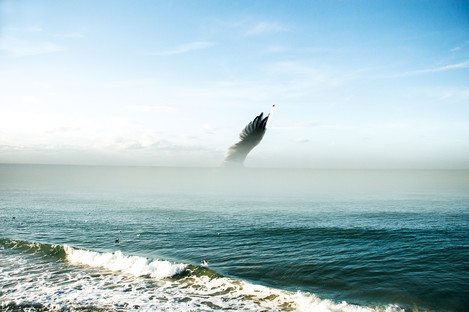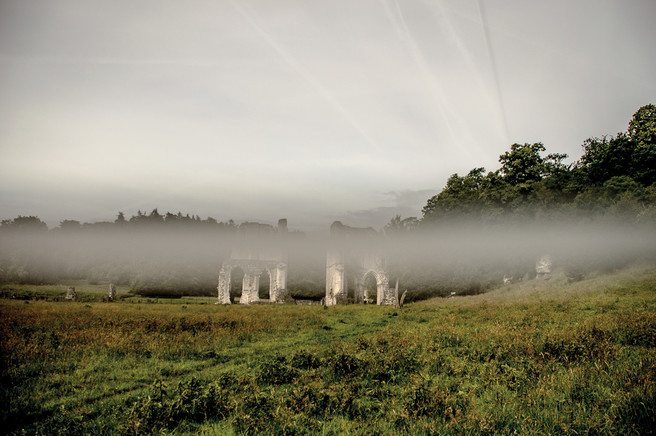Gary Dawes talks about his latest project

Gary Dawes
Photographer Gary Dawes has a very extensive and diverse background in filmmaking he is well travelled and self-taught and is now dedicating his time to still photography shooting personal work which gives him the creative freedom to explore and carry out his own ideas.
Charlotte Britton: Tell me about why you love landscape photography? A little background on what your first passions were, what you studied and what job you ended up doing
Gary Dawes: I was born in Greenwich South London and grew up on a council estate in North West London, I had a healthy dislike of school apart from Art and Drama.
I had it in my mind from an early age that I wanted to do something creative with my life, the thought of getting a job just to look forward to weekends and holidays just didn't sit well with me. I left school aged 17 years old and never returned.
It was during my earlier years of growing up as a kid that I became heavily influenced by the cinema and I would visit religiously every time a new film was showing. This was made possible by my finding a way to break into the cinemas which I got down to a fine art, I had no money.
CB: Can you tell me a little about your education, childhood passions, early exposure to photography and vocation?
GD: It was in those early years which had a profound effect on me which then became the catalyst for my love of images. Not long after leaving school I landed a Job at Sammy’s, a large film camera rental company in London. I started off in the post room to get my foot in the door and after a few months I was offered a job in the Camera department. I then spent the next three years learning all I could about the film camera equipment from 16mm Arriflex to 35mm Panavision cameras which included a year in Soho working with stills equipment from Hasselbads to 10x8 sinars.
It was when I was working in the branch in Soho that I would be able to take the Cameras home at weekends to shoot with and teach myself how to use them.
I would then go on to spend the next 34 years working in the film business as a freelancer learning the art of film making in various grades and traveling extensively both internationally and in the UK. I worked on a vast and diverse array of films from high end TV commercials, documentaries, music videos, and features. In between work assignments I would always be spending my time shooting and producing my own projects. I have now gone solo again and do what I love best. I have always had a deep passion for shooting personal work it gives me a creative freedom. Money don't buy that.
CB: What inspired the Scotch Mist project?
GD: The Scotch Mist series came about due to the fact that I wanted more of a hand in the actual creation of the images I felt I was going stale creatively and becoming dissatisfied with just taking pictures. I wanted to inject more into the work. My goal was to alter the look and feel of the pictures organically in camera, without using computers I always try to give my images a bit of weight as I believe the image is not intended to represent the thing itself, but rather the reality of the force the thing contains.I also believe the truth of a thing is the feel of it. Not the think of it. I really do not see any point in working with photography or any other medium if I am not challenged creatively.
CB: How did you go about planning the project? How did you choose which locations?
GD: When it comes to the photography I am not a great planner, I like the excitement of not knowing what’s around the corner. I will do some research but spend much more time on the road wherever that may be scouting out locations and exploring the landscape to get a feel of the place and to try and get a visual lock on my surroundings. I carry small notebooks everywhere and jot down what takes my eye. These always come in handy for future reference. I am constantly eyeing the world in a sought of cinematic way if that makes sense.
CB: You mentioned on your website that you add the ‘mist effect organically in camera in real time’. Tell us a bit about how you came up with this idea and how you use it in situ
GD:
CB: You talk about this skill being - a discipline long gone and now done on computers. How did you experiment and develop this idea
GD: It was over a period of a few weeks that I would endeavour to try and find a way to replicate a mist, the test were quite extensive which included creams, liquids, oils, gels, wax, fine strips of Lighting gel, tracing paper which I then sandwiched between 2 4x4 optical flats, sandpapering lines on sheets of plastics, glass etc. It was when I was in a toy shop that the idea first came to me, I saw these tubes of glow sticks, so I bought 6 tubes and began testing, I would line up my frame and just position them in shot, The soft white variety seemed to work the best, I found that if I got my camera angles to the sun right I could light the sticks up also another plus was when in low light situations I would crack them to activate the gel inside to glow. But of far more importance they gave me the control I wanted over the composition which was another main driver in the project.
CB: Could you tell us a little about the cameras and lenses you typically take on a trip and how they affect your photography.
GD: I like using different cameras film or digital.I find it refreshing. I'm no camera snob. I have just recently bought a Polaroid instant film camera a One 600 classic and 10 packs of film to keep me going through the winter months, I am really looking forward to shooting with it. My workhorse is a Nikon D3200 it is small and light with 18mm-300 VR which suits me fine and a Manfrotto tripod. I travel light. I believe that what has a far greater effect on my photography is not the equipment, but what I see and feel at any given time, coupled with a little imagination. Cameras are important, I get that, especially the glass. But for me personally, the image is everything and should stand alone. I have no real interest in what cameras the images are captured on.I have had work on display in the past in a group show at a gallery in Luxembourg that was shot on an old Nikon D70 with a 55mm lens.
CB: What sort of post processing do you undertake on your pictures? Give me an idea of your workflow.
GD: After a shoot, I will walk away from it for 3 or 4 days and get on with the other the things in my life and come back to it with refreshed eyes and start to edit I use photoshop to just grade the images. I carefully manage my time with computers and do only what is necessary if things go on a bit I will break the time up with either a walk to the lakes or the forest. I have to find a balance. For me personally its all about getting out there and getting on with creating the work. I have spent the best part of 5 years putting together a portfolio which I think is half decent. My workflow is now being geared more towards exhibitions/shows and marketing. I am in negotiations at the moment to put on a solo show in 2018 with 2 lots of work the landscape series "Gods country" together with the "Body of light" series.
The business side of things now takes up a 50% of my time, unfortunately, I would rather be shooting any day, but the time has now come to get the work shown in the flesh.
CB: What advice would you give someone else for trying out new ideas and techniques
GD: I’m the last person to be dishing out advice but all I can say is “It's not where you take ideas from. But where you take them too"

